
"Hoppin' John might be considered America's most representative rice dish. Originally introduced to the American South by enslaved Africans who worked on rice plantations, Hoppin' John is similar to many rice and pea dishes found in the rice-growing regions of West Africa."
- Chef JJ Johnson
We've been on a streak in the kitchen and we're loving where the journey takes us. Sea Island Red Peas bring the color to this Hoppin' John experience and we can't wait to share it with you! Noah and Katalina made this celebratory dish, traditionally served on New Year's and most definitely worth the wait.
Keep on reading to find out more about this Hoppin' John recipe with Carolina Gold rice and red peas. I know it puts a bounce in my step just thinking about it.
Learn more about cooking with kids and soaking beans.
If you enjoy this recipe, you won't want to miss Chef JJ's Jollof Rice, Cuban beans and rice, Afro-Asian-American gumbo, Persian shrimp with rice, Costa Rican beans and rice, braised oxtail, and Mother Africa sauce as well as kala, vegetarian gumbo, and sambusas.
Disclosure of Material Connection: Some of the links in the post are “affiliate links.” This means if you click on the link and purchase the item, I will receive an affiliate commission. Amazon links are not affiliate links. You can read my full affiliate disclosure.
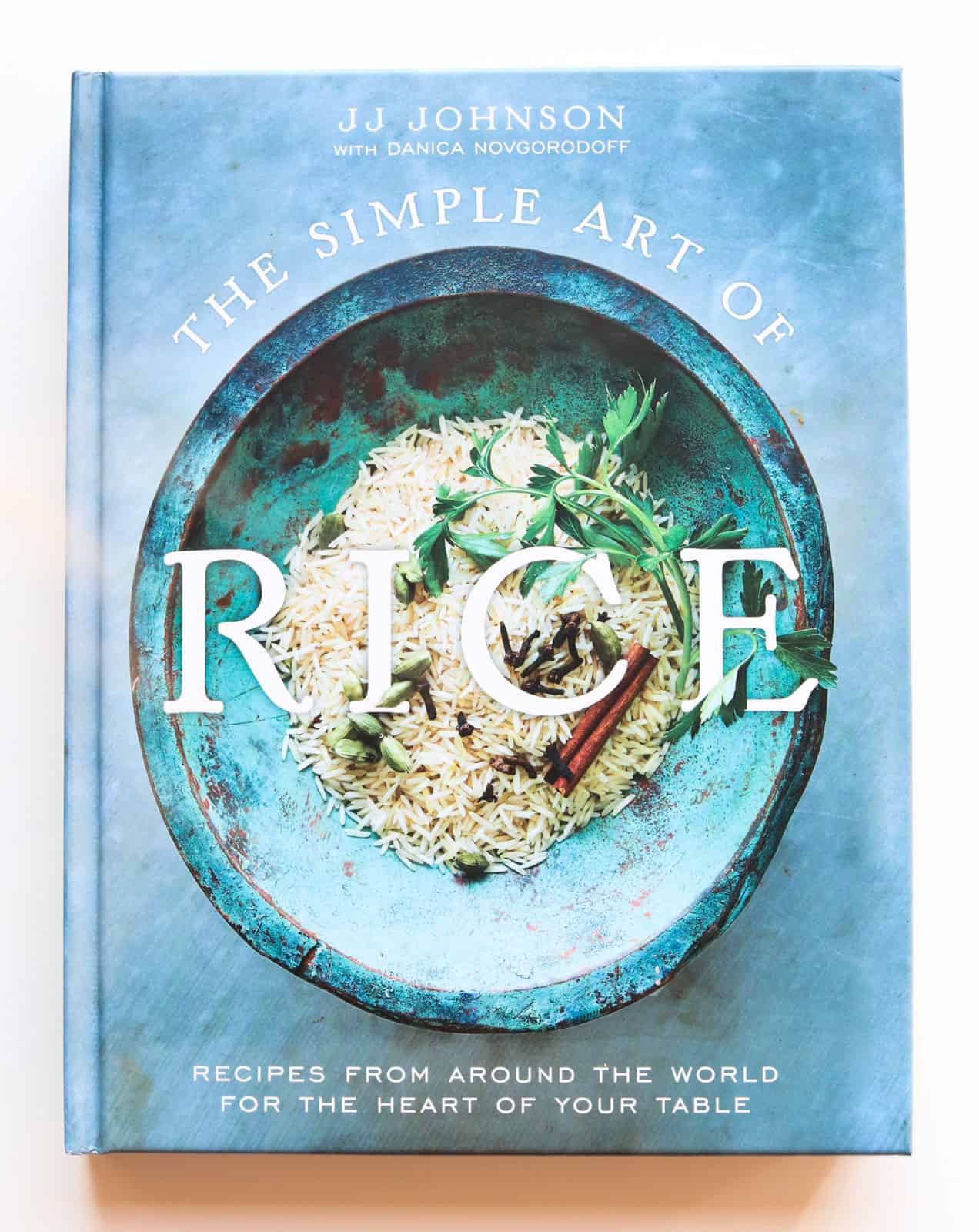
The Simple Art of Rice
This Hoppin' John recipe comes from The Simple Art of Rice: Recipes from Around the World for the Heart of Your Table by JJ Johnson with Danica Novgorodoff.
There's so much to appreciate about this cookbook and, in my opinion, that's exactly where its power lies. It's a complete resource, beginning with the basics of rice cookery before comfortably carrying you around the world and through every meal just as you'd expect with the guidance of a personal chef.
No prior knowledge is required in order to get started with The Simple Art of Rice and Danica Novgorodoff's illustrations are enticing to all ages.
No matter the size of your table or the curiosity of your palate, there's a recipe in this cookbook just waiting for you to fall in love with it. It's the complete package.

JJ Johnson is a James Beard Award-winning chef and co-author of Between Harlem and Heaven, founder of FIELDTRIP where 'Rice is Culture', and host of Just Eats on Cleo TV.
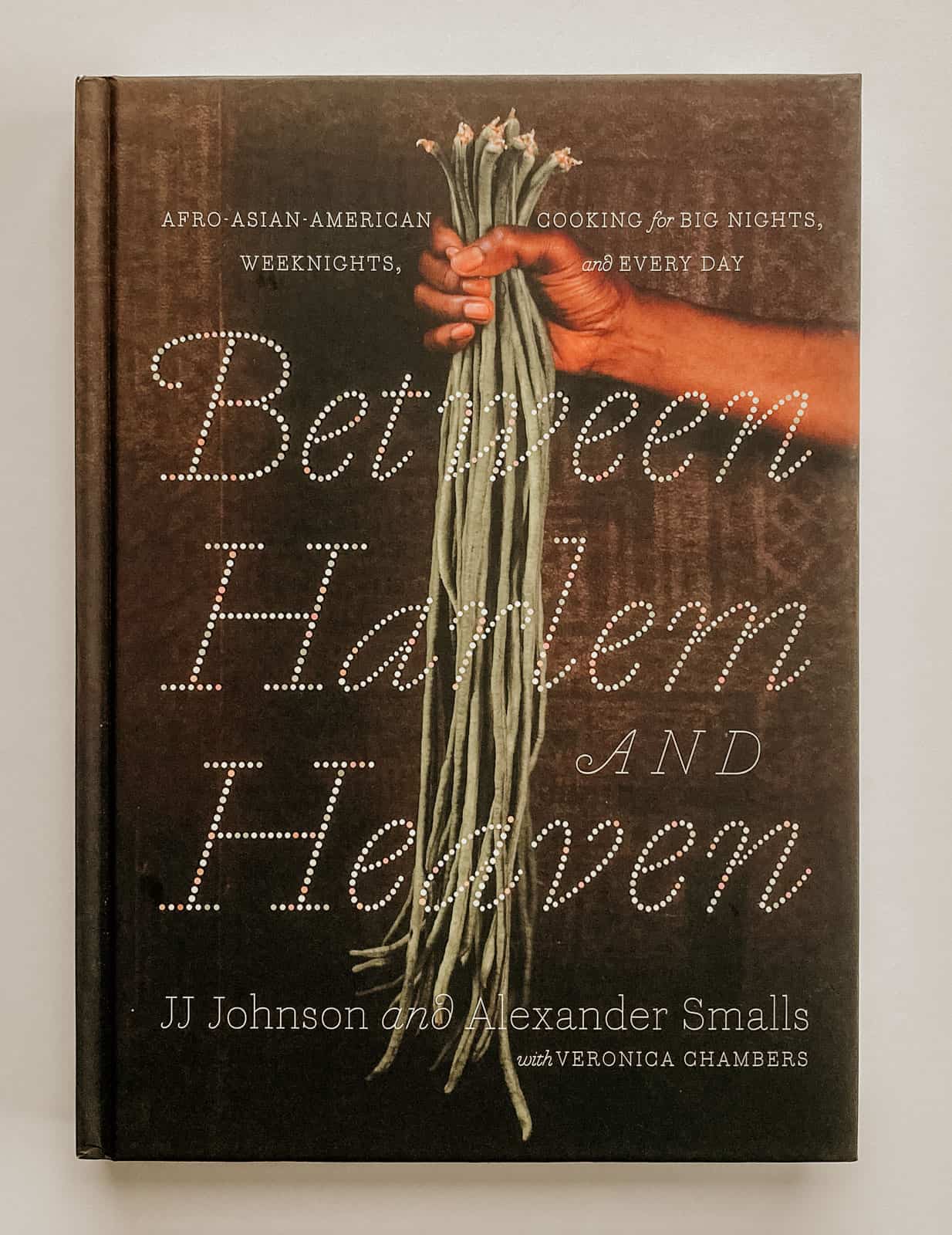
Family & Kids' Cooking Resources
Beautiful and diverse cooking resources for you!
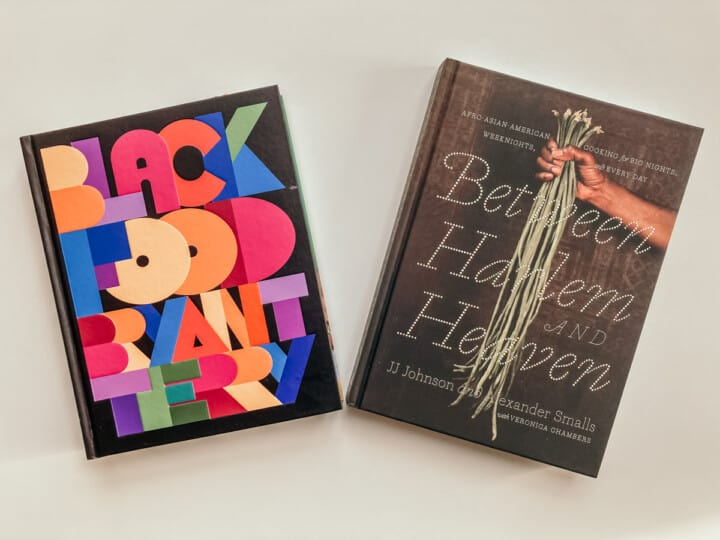
You can also stop by our shop to see more Family & Kids' Cooking Resources.
Learn more about allergies and your family.

Free Cooking Course for Families
Discover recipes for every continent! Sign up to receive free cooking lessons for the whole family. Learn from some of the most talented chefs around the world, including JJ Johnson, and participate in the quality practical life experiences Montessori education is known for.
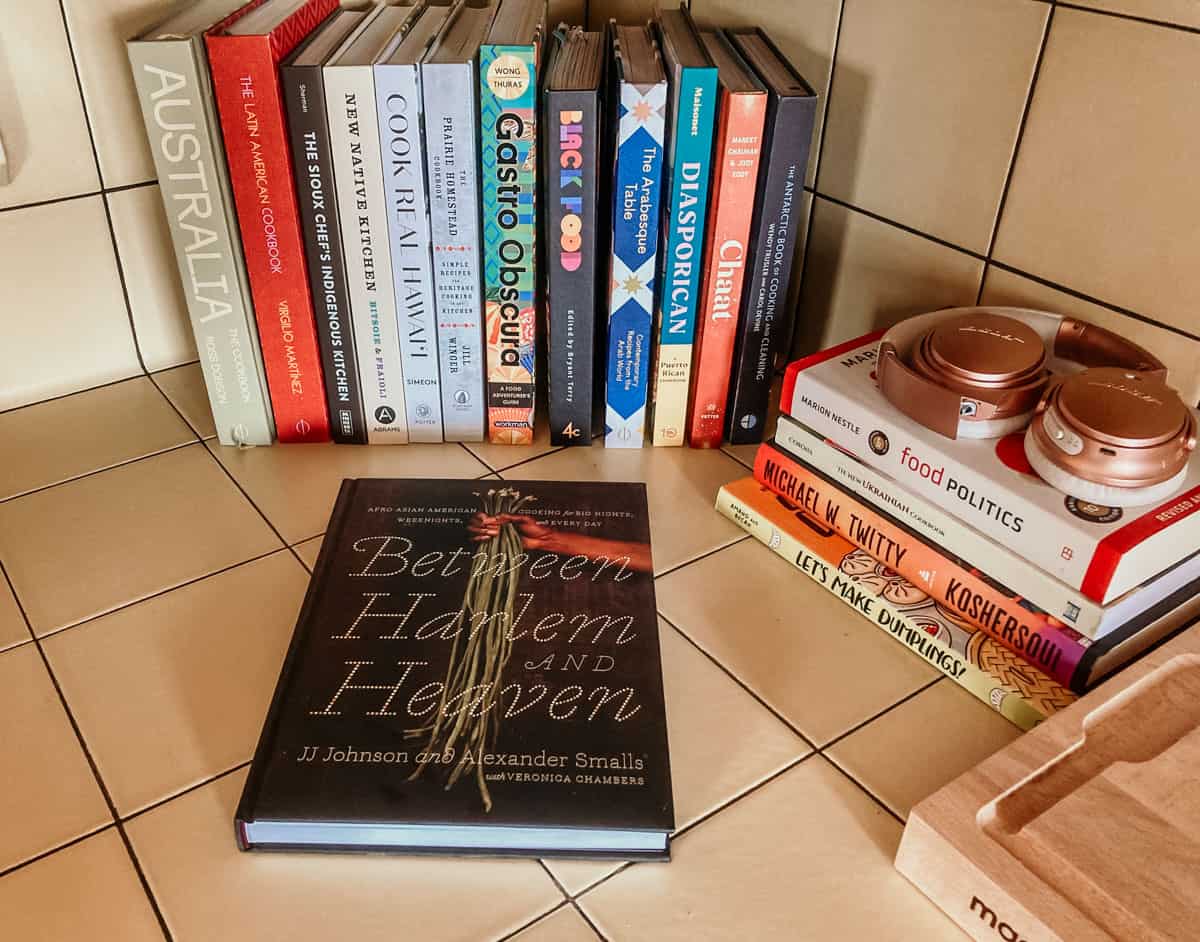
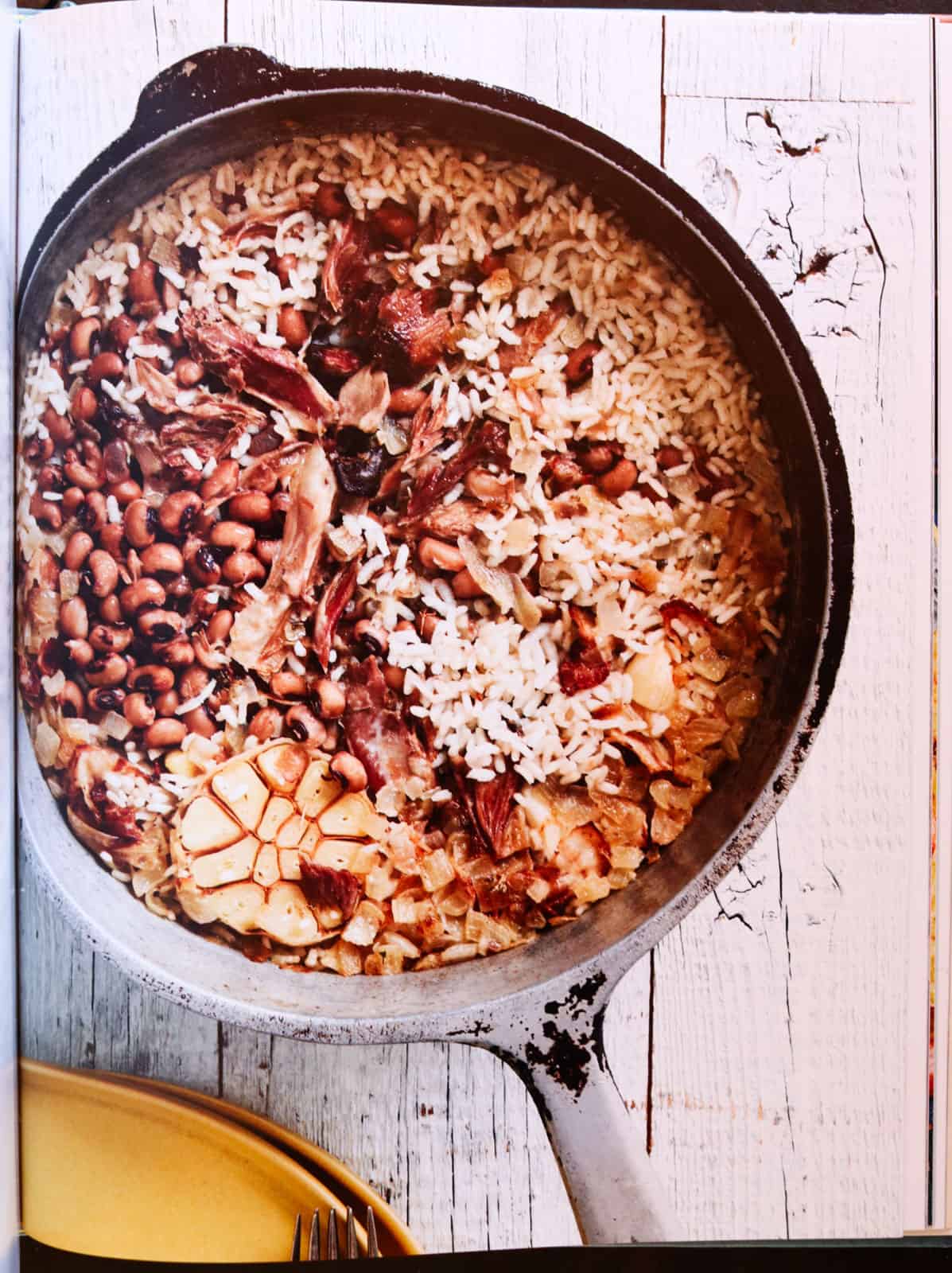
What is Hoppin' John?
As Chef JJ talks about in The Simple Art of Rice:
In antebellum times, Hoppin' John was prepared by enslaved people in South Carolina using broken rice (the fragments of rice grains not suitable to be sent to market) and cowpeas (a legume of African origin that came in many colors, including the now-iconic black-eyed pea).
...And where does this dish get its curious name? One story says that it's named after a mid-nineteenth-century Black vendor who traversed the streets of Charleston with a tottering limp, selling rice and peas.
- JJ Johnson
The best Hoppin' John is made with Carolina Gold rice, smoked pork, and black-eyed peas or red field peas.
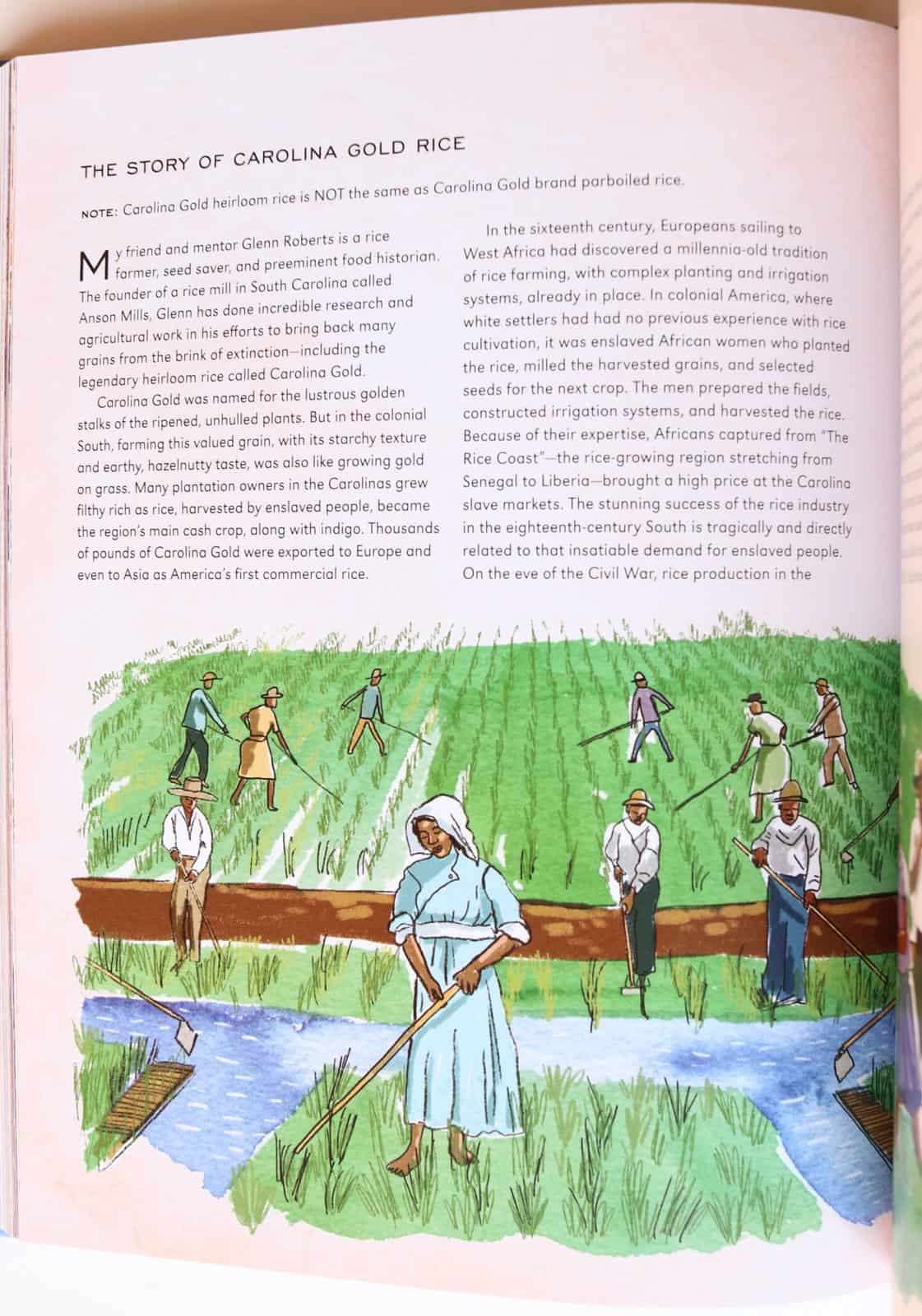
What is Carolina Gold Rice?
Carolina Gold rice is a legendary heirloom grain.
From The Simple Art of Rice:
Carolina Gold was named for the lustrous golden stalks of the ripened, unhulled plants. But in the colonial South, farming this valued grain, with its starchy texture and earthy, hazelnutty taste, was also like growing gold on grass. Many plantation owners in the Carolinas grew filthy rich as rice, harvested by enslaved people, became the region's main cash crop, along with indigo. Thousands of pounds of Carolina Gold were exported to Europe and even to Asia as America's first commercial rice.
In the sixteenth century, Europeans sailing to West Africa had discovered a millenia-old tradition of rice farming, with complex planting and irrigation systems, already in place. In colonial America, where white settlers had no previous experience with rice cultivation, it was enslaved African women who planted the rice, milled the harvested grains, and selected seeds for the next crop. The men prepared the fields, constructed irrigation systems, and harvested the rice. Because of their expertise, Africans captured from "The Rice Coast" - the rice-growing region stretching from Senegal to Liberia - brought a high price at the Carolina slave markets. The stunning success of the rice industry in the eighteenth-century South is tragically and directly related to that insatiable demand for enslaved people. On the eve of the Civil War, rice production in the Carolinas and Georgia had reached over 100 million pounds per year - and nearly four million Black people were enslaved there.
- JJ Johnson
After the Civil War, rice production became industrialized and quality became less important. Fast forward to the 1990's, Glenn Roberts of Anson Mills sought to return quality Carolina Gold rice to Southern cuisine and he began growing it at Anson Mills.


What are Sea Island Peas?
As described by Anson Mills:
Ruddy and diminutive, Sea Island Red Peas represent the variety of heirloom field peas that informed early versions of the dish we know as Hoppin' John in Coastal Carolina. Expressing the vigor of their African diversity with bold flavor and exceptional nutrition, Sea Island Red Peas cook to a sweet, creamy richness.
- Anson Mills

When to Serve Hoppin' John
As mentioned above, Hoppin John is traditionally served on New Year's Day with a side of collards. The peas in the Hoppin' John are meant to symbolize coins, while the greens symbolize paper currency. However, Hoppin' John is a tasty and satisfying dish that can be enjoyed year-round.
The dish became associated with New Year's Day in African American folk tradition and came to symbolize good luck owing to black-eyed peas as traditional West African symbols of the Creator's guidance and protection, wealth, and fertility.
- Michael W. Twitty
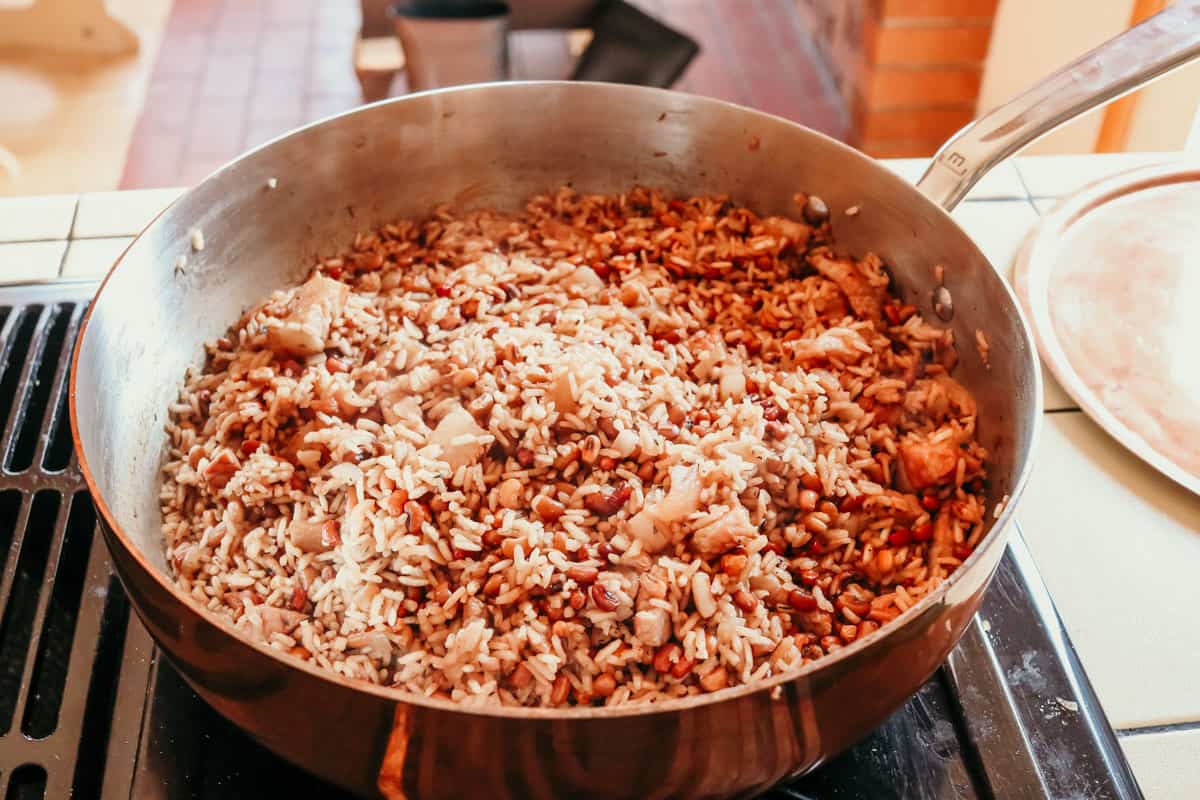
Easy Hoppin' John Recipe

Ingredients
- smoked ham hock - if you can't get your hands on a small ham hock, you can also use pork belly. Check with your local butcher shop. We're using smoked pork belly for this experience.
- garlic - this recipe calls for 1 head of garlic, cut horizontally in half which is about 10 cloves
- bay leaf
- thyme
- water
- bacon
- yellow onion
- rice - washed Carolina Gold rice is preferred for this dish
- garlic powder
- cayenne pepper
- kosher salt - Diamond Crystal is preferred but you can use what you have on hand
- Sea Island red peas - you can also use dried or canned black-eyed peas for this Hoppin' John recipe
Equipment
- Apron
- Prep Bowls
- Butcher Block
- Child-Friendly Knife
- Santoku Knife
- Kitchen Scale
- Jar with Lid
- Fine-Mesh Strainer
- Measuring Spoons
- Measuring Cup
- Wooden Spoon
- Dutch Oven
- Saucier or medium saucepan
- Learning Tower as needed

1. Soak the Red Peas
Wash your hands with soap and water.
Weigh the Sea Island peas using a kitchen scale. Place the peas in a mason jar or bowl and add enough water to cover them. Next, add 1 teaspoon of salt and stir. Soak them for 2 hours.
Learn more about soaking beans.
Continue with this recipe while the peas soak.
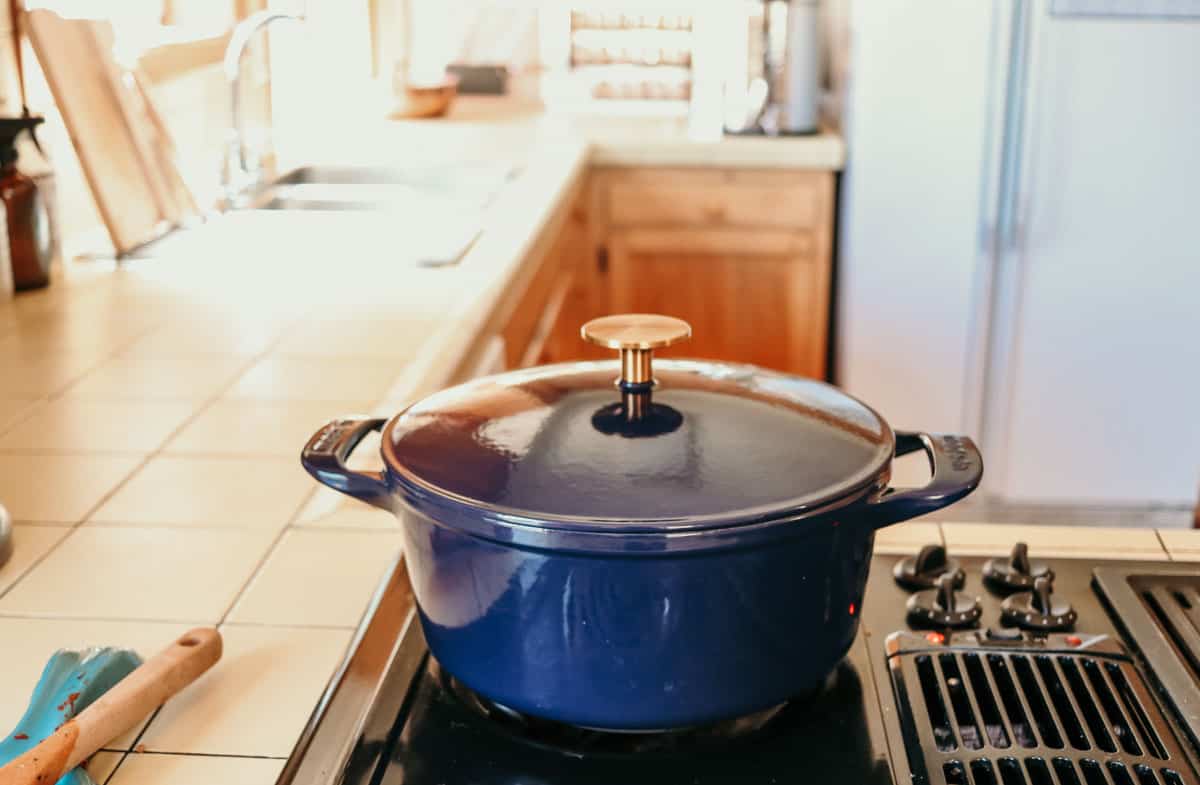
2. Cook the Ham Hock or Pork Belly
Add the smoked ham hock (or pork belly), garlic, bay leaf, and thyme sprigs to a Dutch oven or pot. Add enough water to cover the ingredients. Turn the heat to high and bring the pot to a boil.
Wash your hands after touching raw meat and don't use the same utensils on cooked food that previously touched raw meat.
Skim off any foam and then lower the heat to simmer. Place the lid on top to partially cover. Cook for 2 hours or until the meat is tender.
While that is cooking, you can chop the onion using a knife and butcher block.
Once the meat is done cooking, turn off the stove and strain the liquid into a bowl. Separate the ham hock and discard any other solids. Place the meat on a butcher block and use a fork to pull the meat from the bone. Chop the meat and set the meat and cooking liquid aside. Wash your hands.
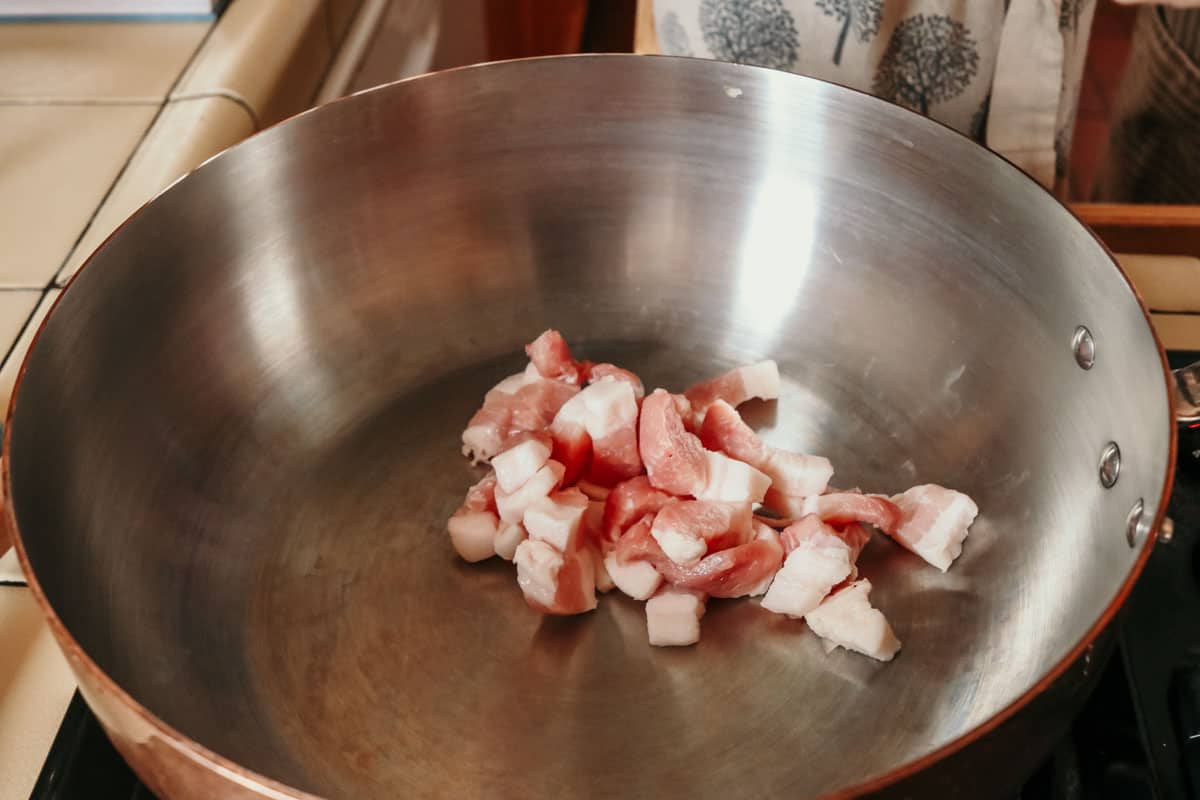
3. Sauté the Bacon
Chop the bacon using a clean knife. Wash your hands. Place a saucier on the stove and turn the heat to medium-high. Add the bacon to the saucier and sauté until the fat has rendered and the bacon is lightly browned.

4. Add the Onion
Add the onion to the pan and cover. Cook for about 3 minutes or until the onion is softened.

5. Add the Rice, Garlic Powder, Thyme, and Cayenne
Add the rice, garlic powder, thyme, and cayenne to the pan. Cook, while stirring, for 2 minutes or until the rice is well coated with the bacon fat and spices.
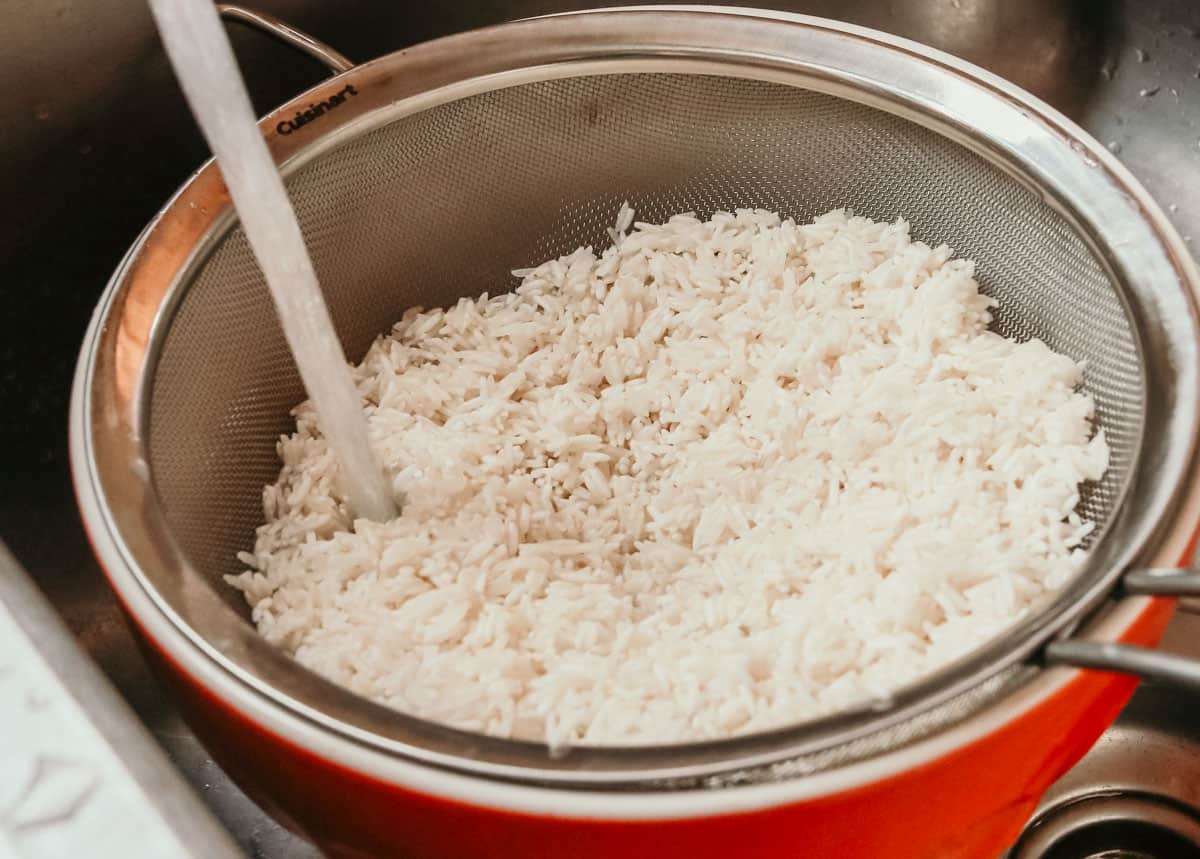
Be sure to wash the rice before adding it to the saucier.

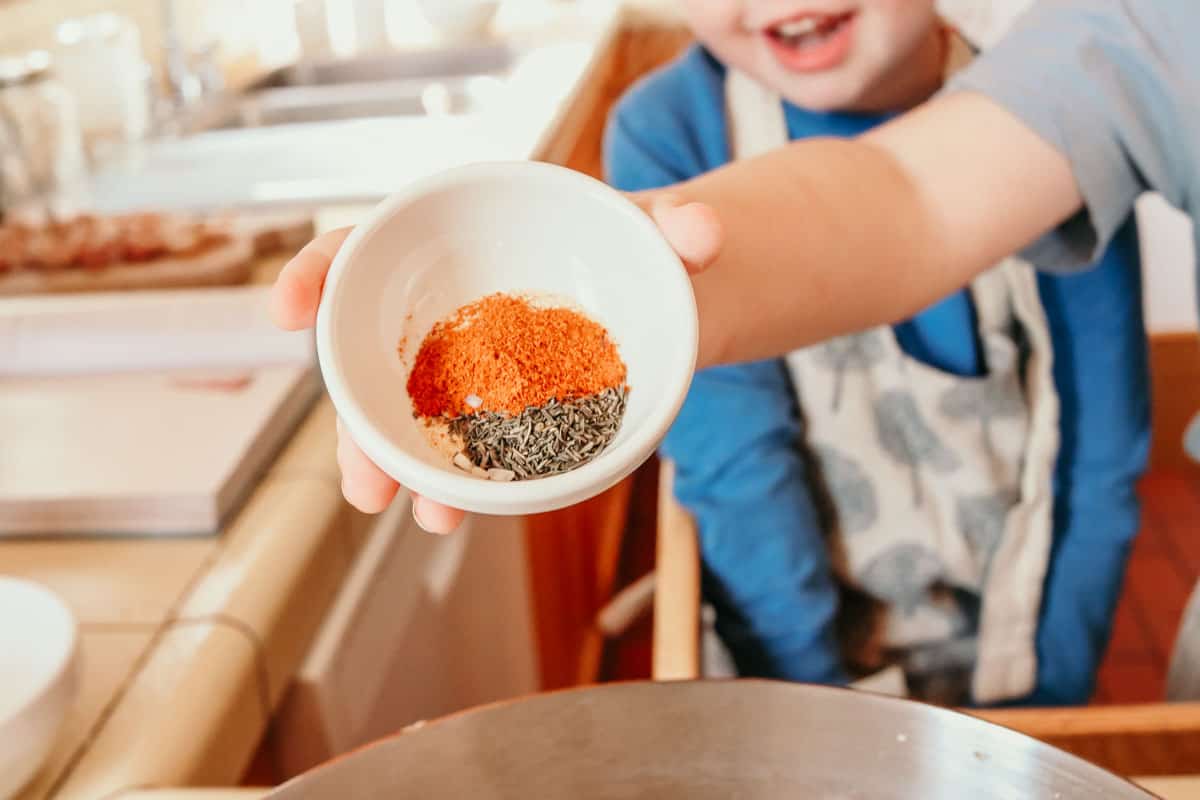

6. Add the Reserved Cooking Liquid to the Saucier
Add 1 ½ cups of the cooking liquid to the pan.
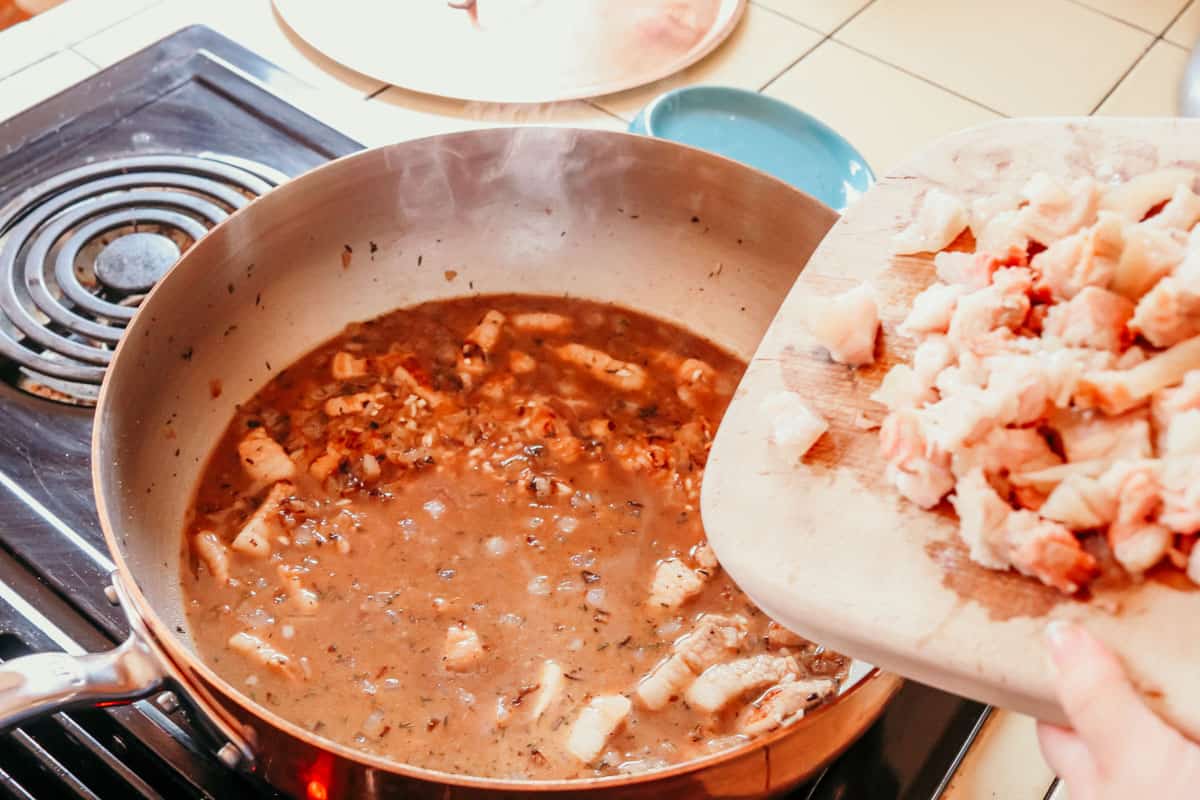
7. Add the Chopped Ham Hock or Pork Belly Meat
Add the chopped ham hock or pork belly meat to the pan.

8. Add the Sea Island Peas and the Salt
Finally, add the drained red peas and salt to the saucier. Give it a stir.


9. Bring to a Boil, Then Cover and Simmer
Bring the mixture to a boil and then place the lid on the pan. Let the Hoppin' John simmer for about 12 minutes or until the peas and rice are tender and all the water is absorbed.

10. Rest the Hoppin' John and Then Fluff With a Fork
Remove the Hoppin' John from heat and let it rest, covered, for 5 minutes.

Use a fork to gently fluff the rice before serving.
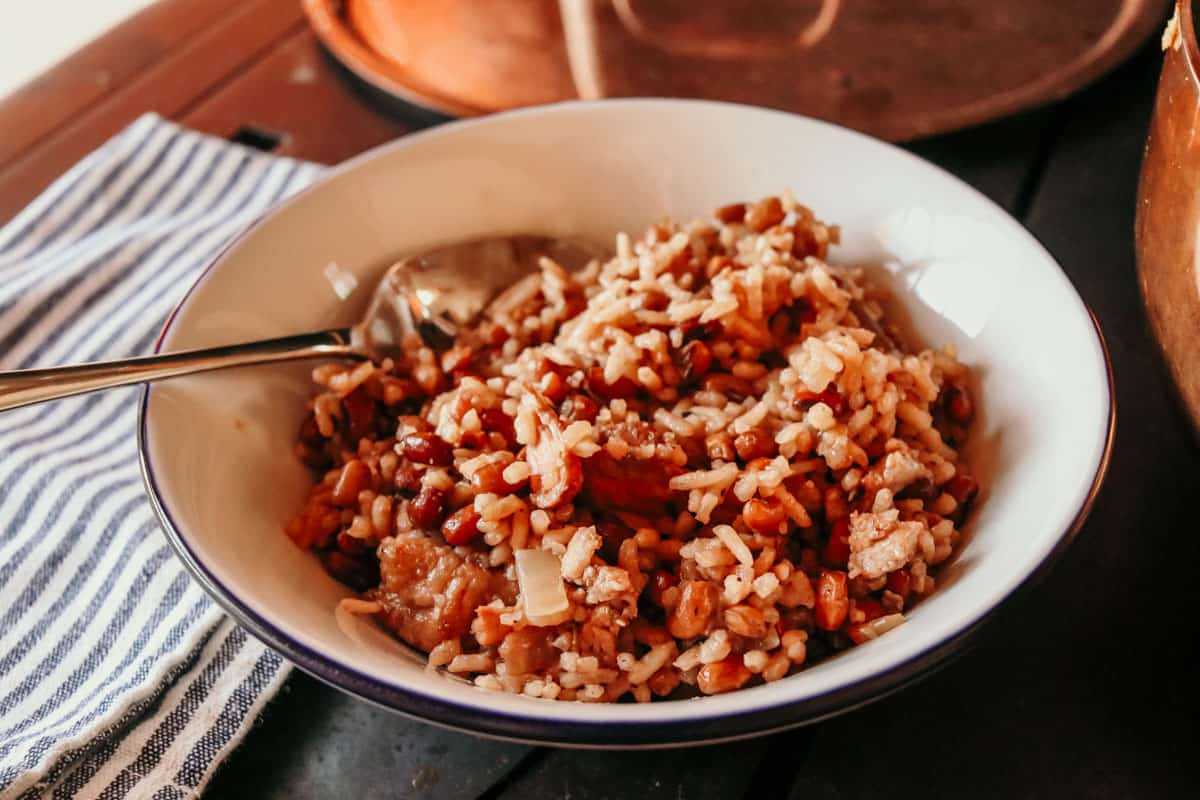
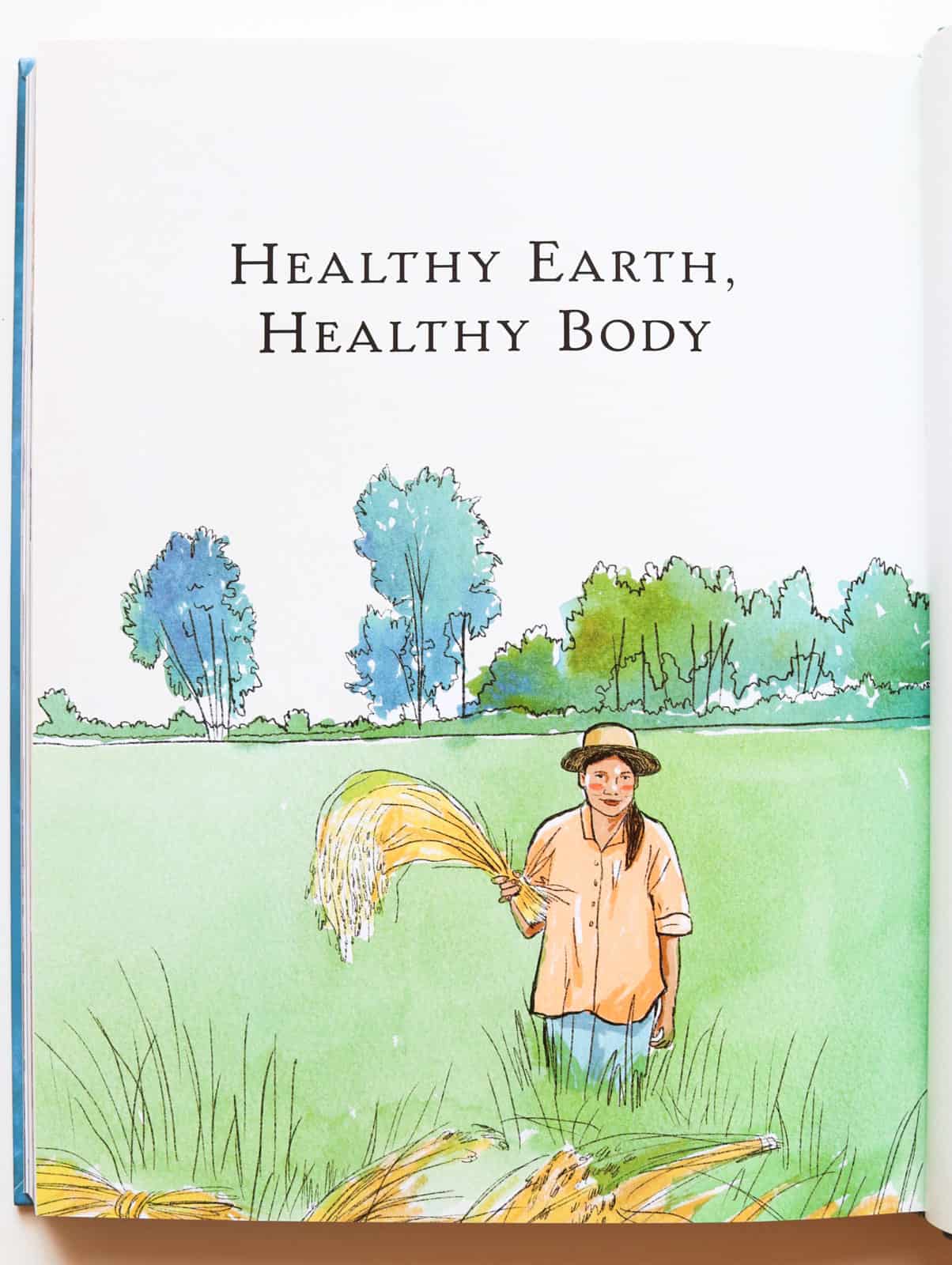
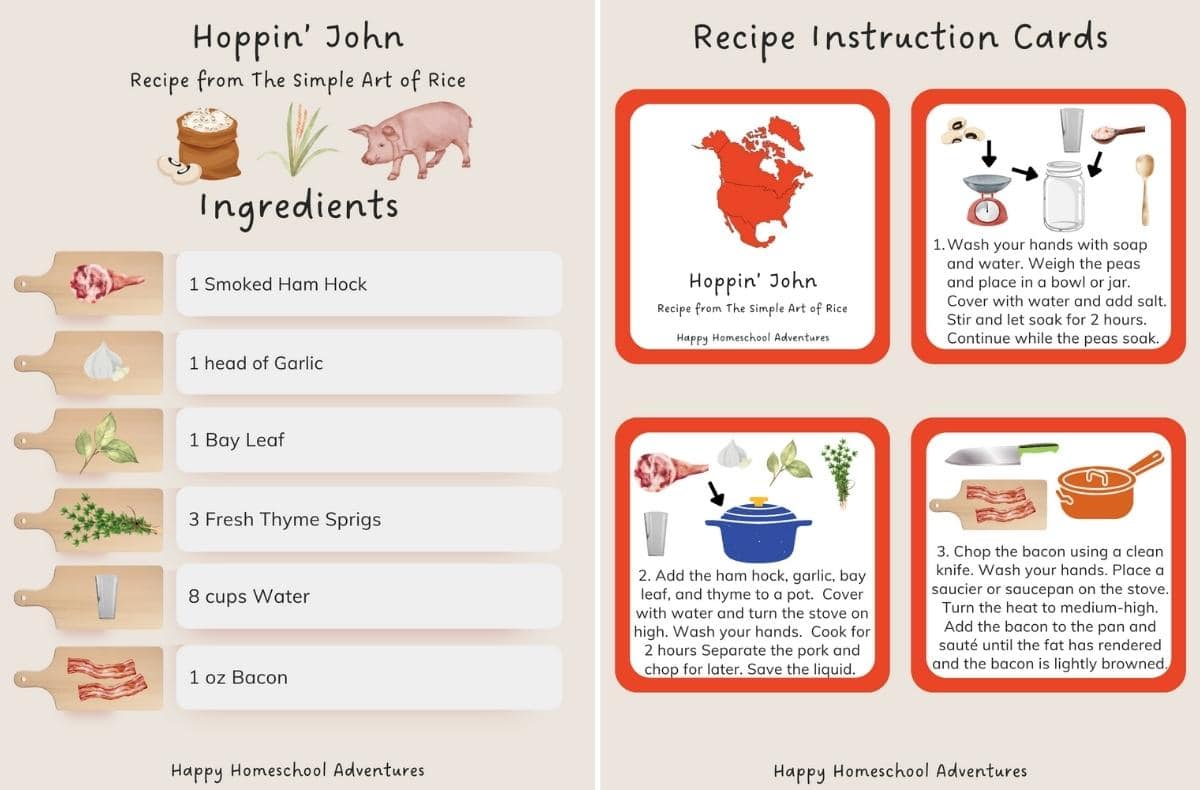
Free Hoppin' John Recipe for Pre-Readers and Up
Grab your free printable recipe cards above. Kids can gather ingredients using the ingredient list, gather their equipment with the tools list, and prepare the meal using the step-by-step recipe cards, with assistance as needed.
The cards are easy to use, include pictures, and encourage confidence and independence in the kitchen. They also make an excellent addition to your Montessori continent box for North America.
Montessori Continent Boxes
Explore every continent with these solid maple hardwood boxes.
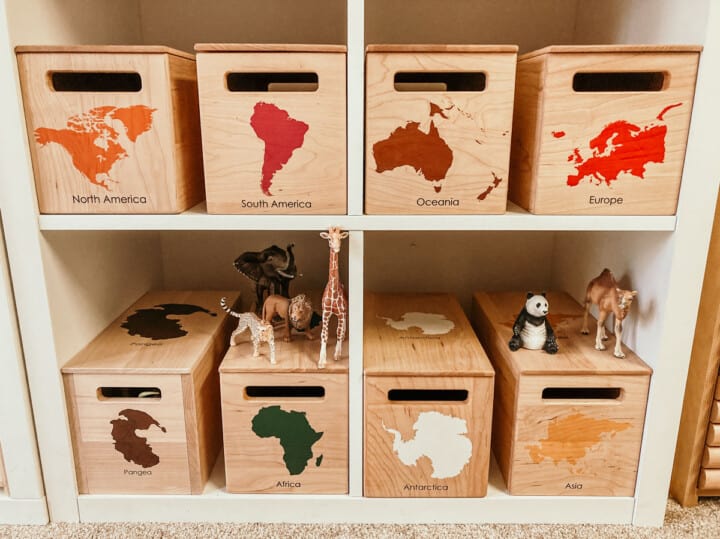

The Perfect Sushi
Looking to extend the fun with a picture book about sushi?
The Perfect Sushi by Emily Satoko Seo with illustrations by Mique Moriuchi teaches us that robot sushi just can't replace the quality of work performed with your hands.
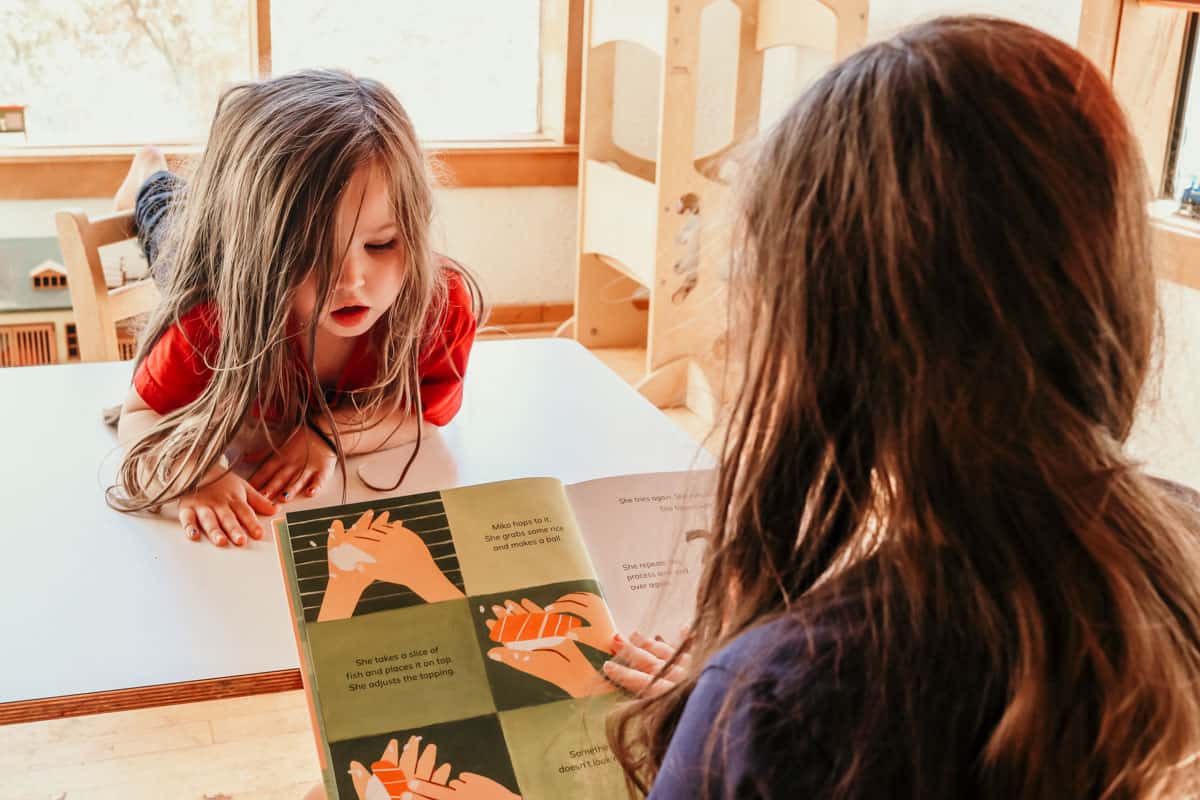
Inside, you'll also find a do-it-yourself sushi recipe.
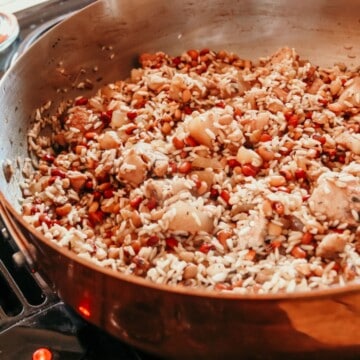
Easy Hoppin' John With Carolina Gold Rice
Equipment
- Jar with Lid
- Copper Saucier or medium saucepan
Ingredients
- 1 smoked ham hock or 1 lb pork belly
- 1 head garlic
- 1 bay leaf large
- 3 thyme sprigs fresh
- 8 cups water
- 1 oz bacon or 2 slices
- 1 yellow onion small
- 1 cup Carolina Gold rice
- 1 teaspoon garlic powder
- ½ teaspoon thyme
- ¼ teaspoon cayenne pepper
- 1 teaspoon kosher salt
- 4 oz Sea Island red peas dried or 12 oz cooked & drained
Instructions
- Wash your hands with soap and water. Weigh the Sea Island peas using a kitchen scale. Place the peas in a mason jar or bowl and add enough water to cover them. Next, add 1 teaspoon of salt and stir. Soak them for 2 hours.
- Add the smoked ham hock (or pork belly), garlic, bay leaf, and thyme sprigs to a Dutch oven or pot. Add enough water to cover the ingredients. Turn the heat to high and bring the pot to a boil. Wash your hands. Skim off any foam and then lower the heat to simmer. Place the lid on top to partially cover. Cook for 2 hours or until the meat is tender. While that is cooking, you can chop the onion using a knife and butcher block. Once the meat is done cooking, turn off the stove and strain the liquid into a bowl. Separate the ham hock and discard any other solids. Place the meat on a butcher block and use a fork to pull the meat from the bone. Chop the meat and set the meat and cooking liquid aside. Wash your hands.
- Chop the bacon using a clean knife. Wash your hands. Place a saucier on the stove and turn the heat to medium-high. Add the bacon to the saucier and sauté until the fat has rendered and the bacon is lightly browned.
- Add the onion to the pan and cover. Cook for about 3 minutes or until the onion is softened.
- Add the rice, garlic powder, thyme, and cayenne to the pan. Cook, while stirring, for 2 minutes or until the rice is well coated with the bacon fat and spices. Be sure to wash the rice before adding it to the saucier.
- Add 1 ½ cups of the cooking liquid to the pan.
- Add the chopped ham hock or pork belly meat to the pan.
- Finally, add the red peas and salt to the saucier. Give it a stir.
- Bring the mixture to a boil and then place the lid on the pan. Let the Hoppin' John simmer for about 12 minutes or until the peas and rice are tender and all the water is absorbed.
- Remove the Hoppin' John from heat and let it rest, covered, for 5 minutes. Use a fork to gently fluff the rice and serve.
Notes
- Substituting pork belly for ham hock changes the nutritional facts for this recipe
- Don't leave food sitting out at room temperature for extended periods
- Do not use the same utensils on cooked food, that previously touched raw meat
- Wash hands after touching raw meat
- Never leave cooking food unattended
- Use oils with high smoking point to avoid harmful compounds
- The pork should reach a minimum internal temp of 145 degrees Fahrenheit
- Always have good ventilation when using a gas stove
- See more guidelines at USDA.gov.
- Full Lesson Info and Pictures at: https://happyhomeschooladventures.com/hoppin-john
Nutrition
Estimated nutrition information is provided as a courtesy and is not guaranteed.



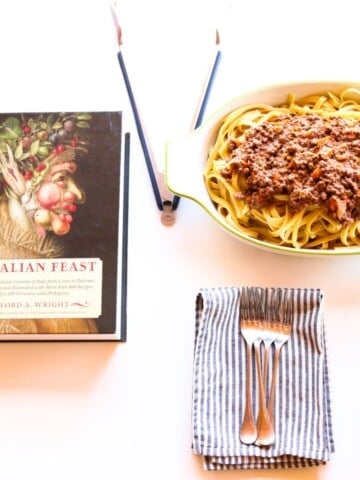



Leave a Reply